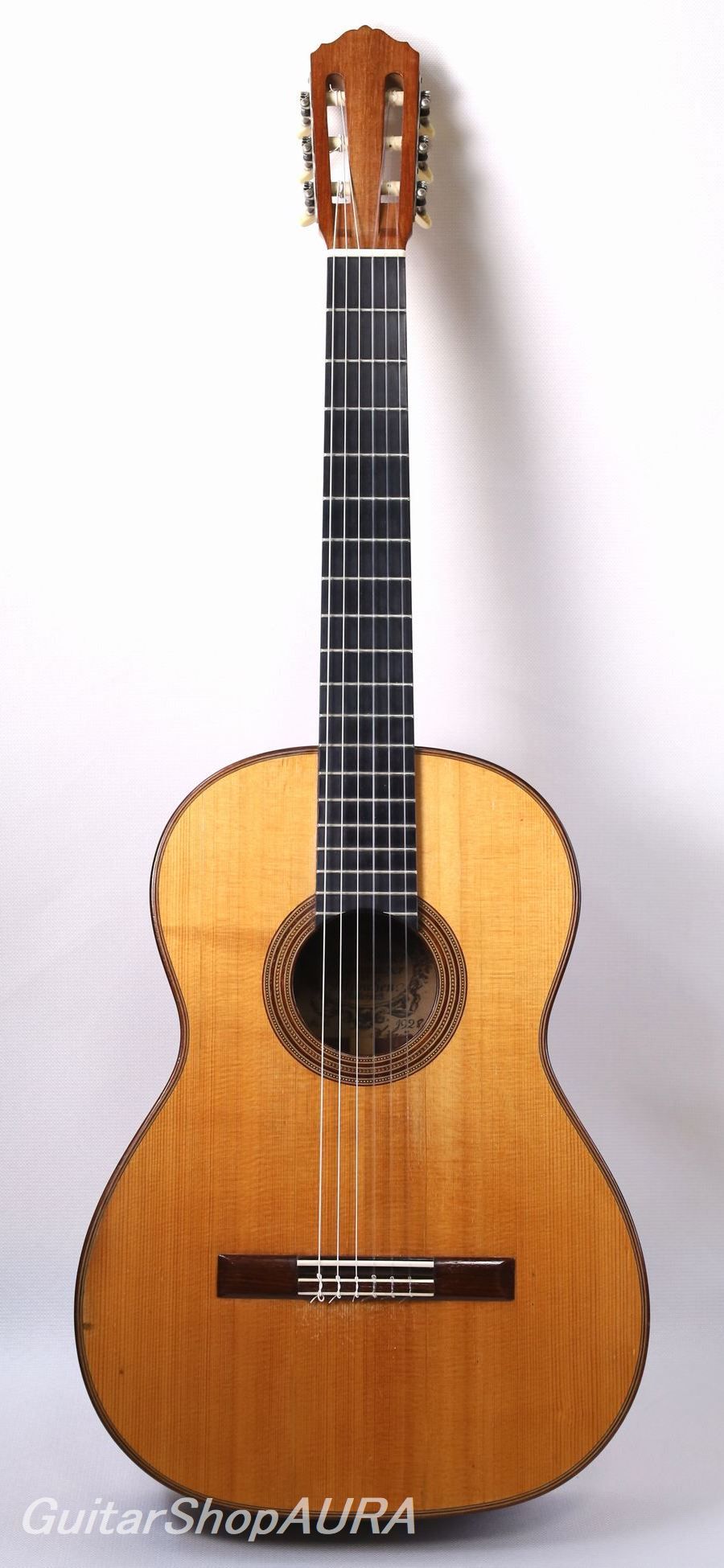
| Instrument | Hermann Hauser I |
| Category | Imported Classical Guitars 〔Vintage〕 |
| Number/Model | |
| Scale length | 647mm |
| Country | Germany |
| Year | 1928Year |
| Top | Solid Spruce |
| Side&Back | Solid South American Rosewood |
| Condition※ | 7 |
| List price | INQUIRE |
| Price (tax included) | Please Inquire |
| option | With Hard case |
Click to enlarge the photos below
Neck: Cedro
Fingerboard: Ebony
Finish(Top): Shellac
Finish(Back & Sides): Shellac
Tuning Machines: Landsdorfer
String Height(1st): 3.0mm
String Height(6th): 3.6mm
[Instrument Information]
Hermann Hauser I, 1928
This guitar was crafted just four years after Hauser’s famous encounter with Andrés Segovia in 1924, marking a pivotal point toward Hauser's pinnacle years of craftsmanship in the late 1930s. In fact, Segovia himself used a 1928 Hauser during his 1929 Asia tour, which included Japan. Additionally, renowned guitarist Julian Bream later owned a 1928 model, making this particular year an iconic one for guitar enthusiasts.
During this period, Hauser was experimenting with various designs, and this guitar is thought to be very similar to the instruments owned by Segovia and Bream.
Hauser’s “Segovia model” from this period is a blend of German refinement and Spanish tonal character. This is comparable to the process of French luthier Robert Bouchet, who, starting with Torres’ methods, developed his own distinctive (French) sound. In 1928, Hauser’s guitars still had a strong Spanish influence, which sets it apart from the later models that would evolve into the more balanced, piano-like tones Hauser is known for.
At this stage, the guitar’s sound design revolves around powerful, rich basses and clear, singing trebles—each string distinct and articulate, but with a depth that resonates as a whole. Unlike later models, which would produce a more directional, “linear” resonance, the 1928 Hauser offers a vibrant, full-bodied tone that is more grounded in contrasting lows and highs. This design indicates the beginnings of the direction Hauser would take in the 1930s.
What is particularly notable about this guitar is its exceptional expressiveness, marking it as the apex of German guitar making at the time.
[Construction Details]
The top bracing structure features two harmonic bars on the neck side and one on the bridge side. The harmonic bar on the lower side has small openings on the high and low ends (5 cm long, 3 mm high), which allows the reinforcement plates on each side of the soundhole to pass through. These reinforcement plates are affixed such that one end touches the upper harmonic bar, while the other extends just over 1 cm into the lower bar’s opening.
The fan bracing consists of seven symmetrical, fan-shaped braces, with two closing bars forming a “V” shape at the bottom, which supports the braces. This bracing arrangement is very similar to the early Hauser designs.
The resonance is tuned slightly below G#.
[Condition]
The guitar is finished in a shellac varnish. The top has some notable repairs, particularly in the form of crack repairs along the high and low sides, extending from the fingerboard to the bottom. The two repairs are reinforced with patches on the inside, while other areas are simply glued. Despite these repairs, there are no issues with the guitar’s playability.
In terms of aging, the top shows minimal warping or waviness, which is unusual for instruments of this age. There are also various play marks, including scratches and dings, consistent with its age. The back and sides show wear from contact with clothing, but overall, the guitar is in excellent condition for its age.
The neck and frets are in good condition, and the neck shape is a standard D-profile. The action is set to 3.0/3.6mm (1st string/6th string at the 12th fret), and the saddle has a surplus of 0.5 to 1.0 mm for further adjustment if needed.
The tuners are original Landsdorfer, and they continue to function perfectly.
This particular 1928 Hauser I is a true gem for collectors and musicians alike, representing the peak of Hauser's early work and a vital piece of guitar history. Let me know if you need further details!